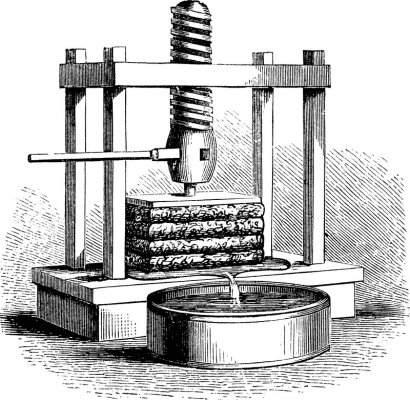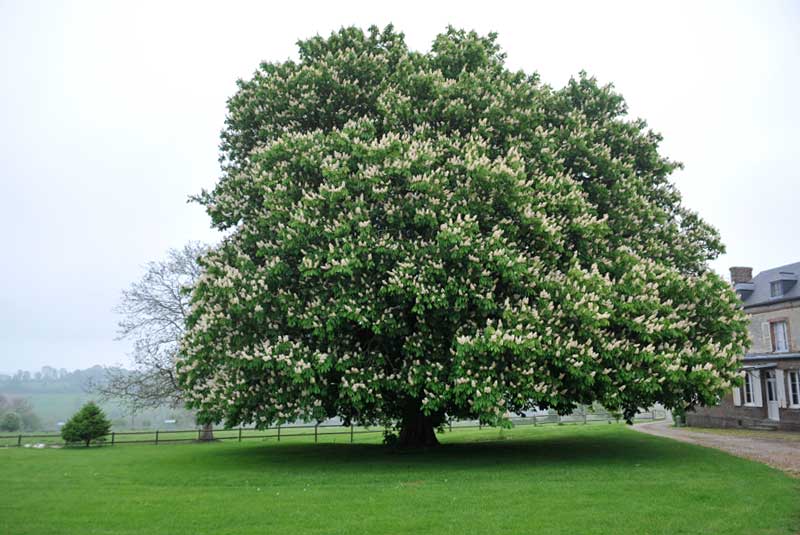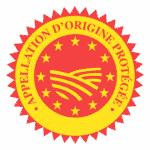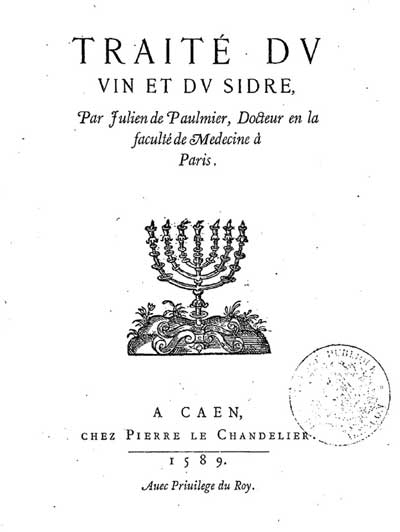History
historical
Landmarks
It all starts
in the Middle Ages
The development of cider production in Normandy began in the 11th century, with the introduction, by Norman sailors, of varieties rich in tannins from the Basque Country (or Biscay), hence the name of the bisquet variety, still very present today.
With the grafting of these varieties of Basque origin, rich in tannins, significant progress is made in the development of cider, because the phenolic compounds slow down and protect the fermentation and facilitate the clarification of the musts.
Following a general famine, in 1259, Saint-Louis prohibited the manufacture of beer from cereals, in order to reserve these foodstuffs for food. The result is a rapid development of cider, which replaces cervoise.

Appearance of the fruit press
Advances in manufacturing techniques during the 13th and 14th centuries, with the appearance of the press in particular, will allow the quality of this drink to compete and supplant the wines produced then in Normandy, leading to the regression of the vineyard.The apple at the expense of the vine
The regression of the vine will increase in a climate of scarcity in the XVIth century with, in 1566, the ordinance of Charles IX imposing the uprooting of the vines for the benefit of meadows and plowing and whose application will be reinforced by Henri III to from 1577. Normandy, and particularly the Pays d’Auge, then begins to cover itself with apple trees, which coexist with plowing and meadows and which will remain there all the better as the climatic conditions of this region can only exceptionally satisfy the requirements of the vine.Historical ambassadors

Julien Le Paulmier, doctor of King Henri IV
Julien Le Paulmier, doctor of King Henri IV, and of Norman origin, points out in his treatise on wine and cider (De Vino and Pomaceo), at the end of the 16th century, the particular character of the cider from the Pays d’Auge, ” sought after for the navy ”and already cites the quality of certain varieties still cultivated today.Charles de Bourgueville – XVI century
Keeping “on the water two or three years”, these ciders, more bitter and more heady, which, according to another 16th century author, Charles de Bourgueville, are “the most excellent that one can drink” were an essential element of Norman production.The Marquis de Chambray, 1754
In a pamphlet on “The Art of cultivating apple trees, pear trees and making ciders according to the usage of Normandy”, the Marquis de Chambray mentioned the best Norman soils in 1754: “We cannot say precisely what kind of soil will give the best cider; experience alone can teach in this respect: the richest bottoms of Normandy, the Cotentin where Isigny is, the Pays d’Auge, give excellent ciders ”.Biodynamic principles
from the 18th century
From the 18th century until the beginning of the 20th century, the Pays d’Auge covered itself with a grassy hedgerow, to the detriment of plowing; this is how livestock and cider farming developed. These two activities are carried out on farms in a complementary manner. The grazing of animals under high-stem orchards requires the implementation of techniques combining the management of trees, grass and herds, which are particularly well mastered in Pays d’Auge.
At the end of the 19th century
the production of unpasteurized cider, with foaming in the bottle, appears and develops. It is pleasantly colored, because the crushing of the fruits and the length of the pressing causes the pulp to be cuvée and the juices to oxidize. It is intended primarily for special occasions. The notoriety of the cider of the Pays d’Auge reached its peak at the end of the 19th century, where it was the subject of a special listing in Paris. Pays d’Auge sparkling cider is now a high-value product.The designation of origin Pays d’Auge
Early 20th century
60s
1996



